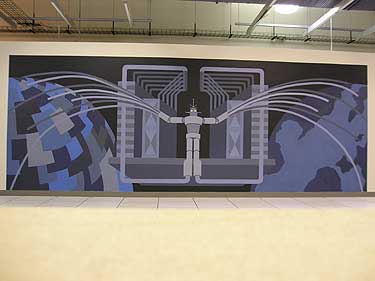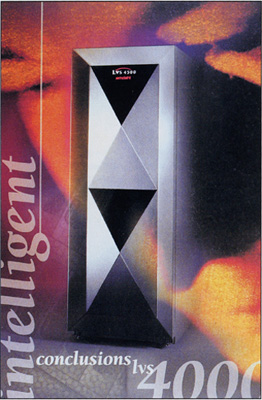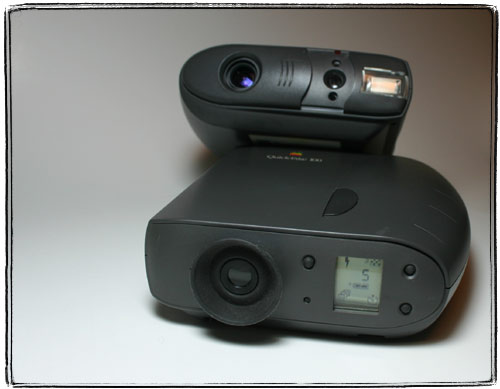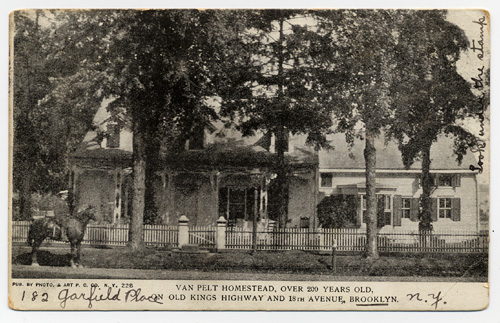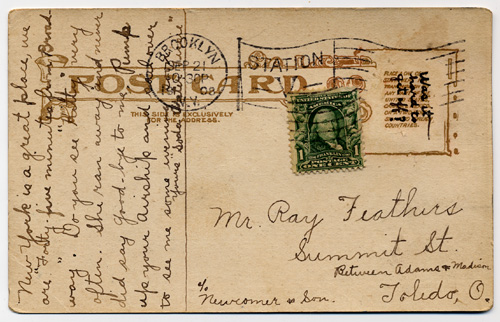A few years ago I purchased a strange piece of computing history on eBay. Some guy in Canada was selling what he described as a “model” of an Amdahl processor. He did not include a picture with his listing, and because of that I was able to snap it up for about 30 wing-wangs.
When the package arrived, it turned out to be a real 42 (!) processor board from an old Amdahl mainframe that was “presented to T. Eaton Company for its purchase of Amdahl 5995-3550M processor in June 1992” as the plaque said. T. Eaton Company no longer exists, it was swallowed by Sears. Neither does Amdahl – it is a part of Fujitsu now.
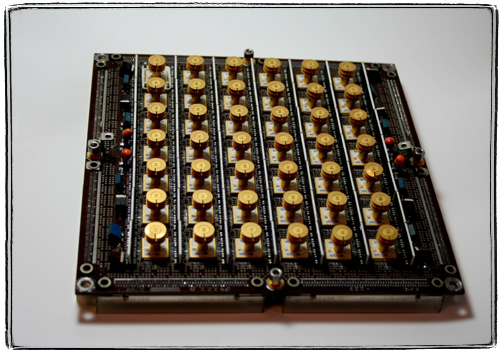
The little cooling towers made it possible to air cool the chips.
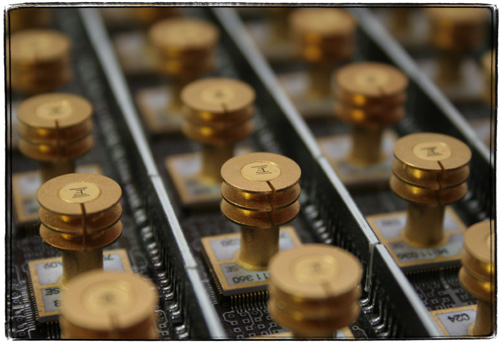
The back of the board was very strange though. All the wiring seemed to be done “point-to-point” by hand. Overall, thinking about how many work-hours went into designing and making that board made me shudder.
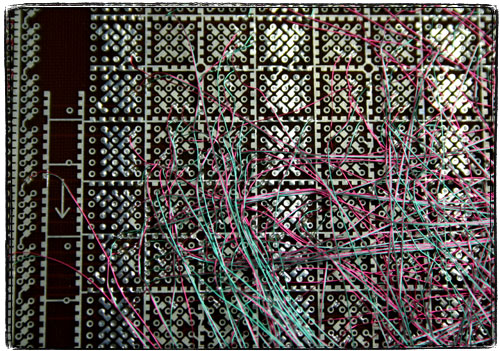
[update] Thanks to the Boing Boing liks this seems to have become the second popular post on my site – first one being the Revelation post which gained popularity thanks to being the only google result for “omnioum finis imminet” for a while. I’ve got some great information from former Amdahl employees:
Tom: ”
The item is an MCC (multi-chip carrier) from an Amdahl V8, V7 or V6. Many were plugged into either side of a large frame which connected the MCCs to each other and to power, the console, memory, and the IO cables.
The finned gizmos are cooling towers glued to the top of the individual chips. A plastic cover directed cool air over the towers and fans exhausted it out the top of the frame
hese were used in the 470 series computers. The follow on computer, the 580 used much larger boards about the size of a pizza box. They were inserted into a plenum (which became known as the pizza oven) with ZIF connectors on the side. They had black instead of gold cooling towers with more fins.
The board is circa 1980. The back wiring was done in Japan because they couldn’t find enough people in the US who could do it well. I believe the chips were laser bonded on the front with the hand wiring on the back. Note that the circut boards were multi-layer and the back wiring was only used where they couldn’t get enough paths from the circut boards and for engineering changes after production.
”
NoOneAtAll : “Amdahl used to give out dead hardware and out-of-date engineering samples to their sales guys made into lots of different things. I’ve seen coasters made out of unusable processors, an Amdahl sales binder made from a set of bad carrier boards, a couple of plaques like this one made from DOA MCC modules, pen holders made out of ribbon cable, etc.
An IBM reseller I worked at spent Amdahl’s entire corporate lifetime telling them no. By the time the sales guy gave up, pretty much everyone at the company had been hit up by the guy as a possible lead, and pound for pound there was more dead Amdahl hardware repackaged as kitsch on the desks in sales than we had actually moved in Amdahl equipment. ”
[update] Two similar processors just came up on eBay. The picture quality is ghastly, but they seem like a bigger version of the one that I have, with even more complicated back wiring.
P.S. Don’t forget to take a look at the rest of my blog, or if you are interested in Amdahl, at the rest of my Amdahl-related posts.



